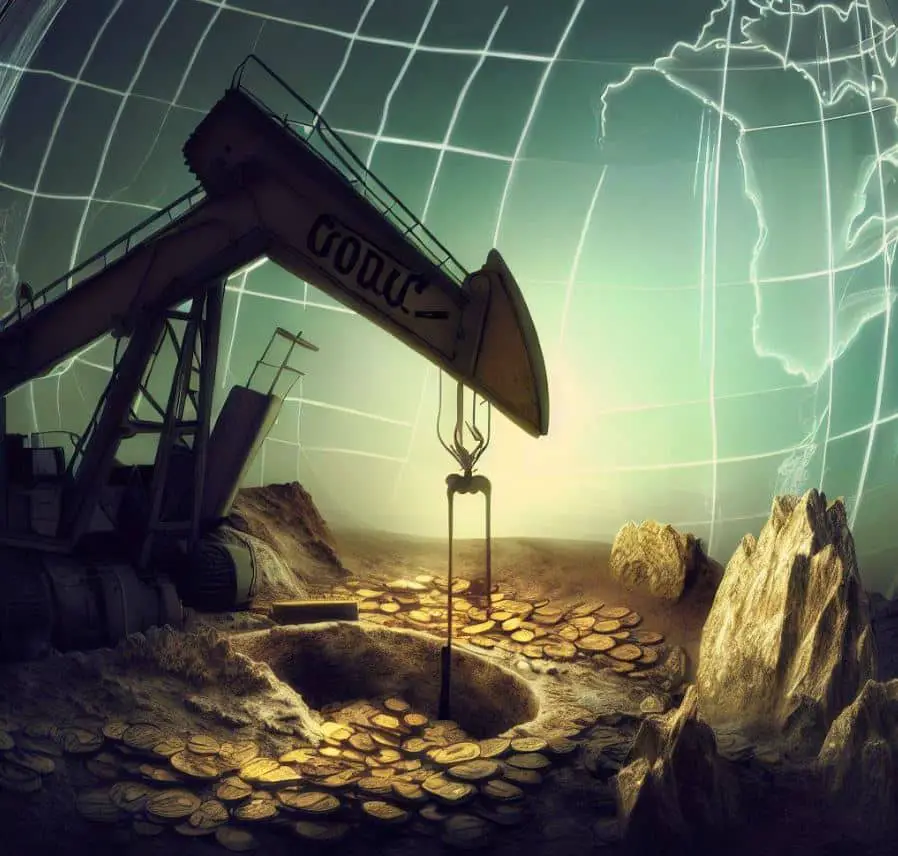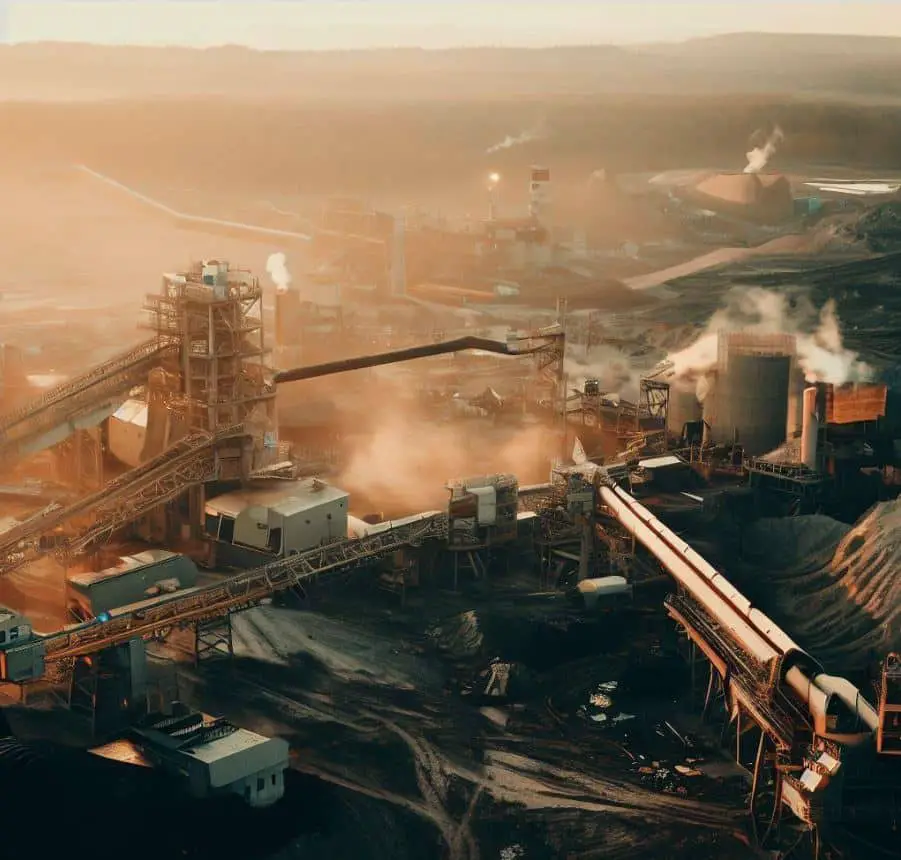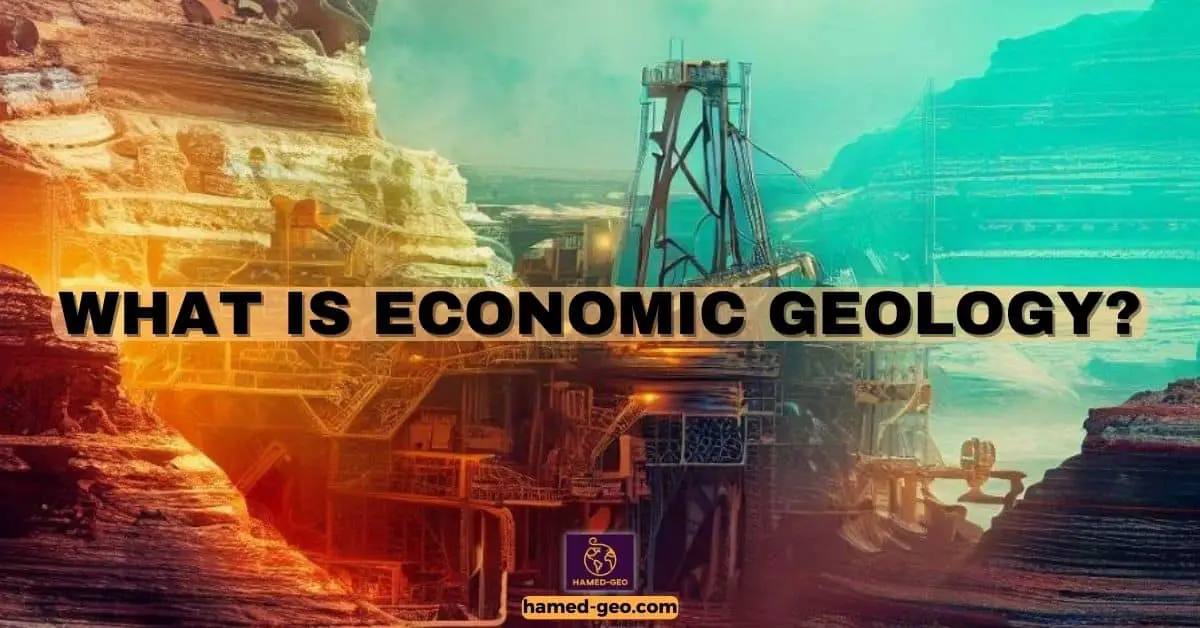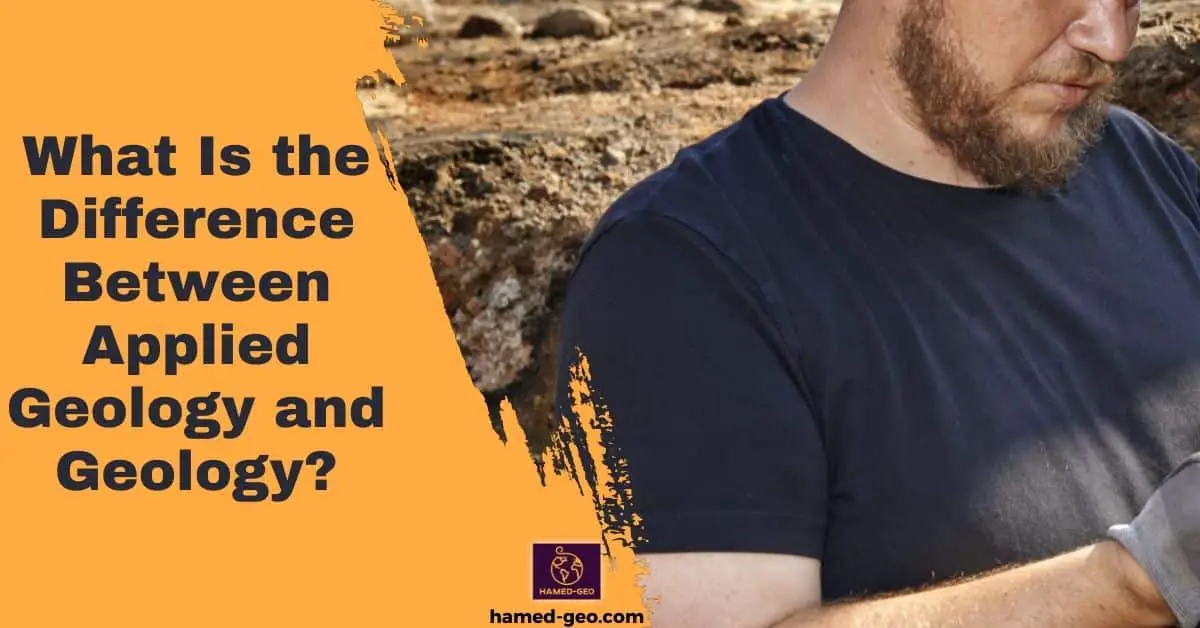Economic geology is an important subset of geology that focuses on the study of earth materials utilized by humans in a variety of industries. This branch of geology falls under the umbrella of geosciences, with a particular emphasis on the extraction and use of minerals and fossil fuels, which include petroleum, natural gas, coal, and others. Economic geology also investigates potential sources of precious and base metals such as gold, silver, iron, copper, and zinc. This field plays a pivotal role in informing and guiding decisions about the exploration, development, and sustainability of natural resources.
The understanding of economic geology is crucial in today’s world, as it directly impacts the global economy, influences policy-making and planning, and is vital for environmental and societal sustainability. It intersects with several other fields such as environmental science, mining engineering, and economic theory. Economic geologists work in a range of sectors, including mining, oil and gas, government, and academia, where they conduct research, develop exploration strategies, assess potential economic impacts, and contribute to policy development.
Overview of Economic Geology
The concept of Economic Geology requires a clear definition for a comprehensive understanding. A critical discussion on its role highlights the importance of this field in economic development. The benefits of economic geology, extending from resource identification to its efficient management, are worth analyzing. A detailed assessment of the types of economic resources — from mineral deposits to fossil fuels — further underscores its significance. Lastly, a futuristic perspective on economic geology is essential to anticipate challenges and devise strategies for sustainable resource exploitation.
Definition of Economic Geology

Bridging the gap from the previous section, let’s delve into the realm of Economic Geology. This field can be defined as a crucial branch of geology that involves the study of materials that can be utilized for economic and industrial purposes. It focuses on the extraction of minerals and fossil fuels that are essential for the global economy. Such resources include coal, oil, gas, precious metals, and base metals, to name a few.
The core of Economic Geology is to understand the formation, distribution, and exploitation of these resources. It is important to note that this field transcends the mere extraction of resources, it also encompasses an understanding of how these resources are formed, their present geographical distribution, and the environmental impacts of their extraction. Thus, Economic Geology is the science at the intersection of numerous disciplines, paving a path for sustainable and economically viable resource management.
Economic Geology underpins the economic and industrial development of a nation, making it an indispensable body of knowledge.
The Role of Economic Geology
Transitioning elegantly from the basic understanding of the subject, it becomes crucial to delve deeper into the Role of Economic Geology. This discipline serves a significant function as it aids in the exploration and extraction of mineral resources. It plays a paramount role in identifying deposits of minerals and fuels that are critical to modern civilizations. Through various geological and geophysical methods, economic geology facilitates the search for substances like iron, copper, coal, oil, and gas, which are essential for industrial and technological advancement.
Moreover, economic geology provides valuable insights into the possible locations of mineral and energy reserves, their potential worth, and the environmental impact of their extraction. Hence, it plays a significant part in informing decision-making processes related to resource management and sustainability.
Furthermore, the role of economic geology extends beyond the realm of resource extraction. It also contributes to the understanding of geohazards, such as earthquakes and landslides, thereby aiding in mitigating risks associated with these events.
Benefits of Economic Geology
Stepping into the realm of benefits, Economic Geology offers a myriad of advantages that extend across different sectors. Unquestionably, one of the most significant benefits is the identification and quantification of mineral reserves. This enables efficient and sustainable extraction of these resources, which plays a crucial role in the global economy.
And it doesn’t stop there. Economic geology also aids in the strategic planning and decision-making processes of various industries, including mining and construction. By identifying potential resource deposits, it assists in determining the feasibility and profitability of certain projects.
Additionally, economic geology contributes to advances in technology. For instance, the discovery of rare earth elements – which are used in a wide range of high-tech devices – has been made possible by this field.
To top it off, it plays a vital role in environmental conservation. Through the assessment of the impact of resource extraction on the environment, sustainable practices can be implemented to minimize potential damage. This ensures the future availability and sustainability of these resources.
Types of Economic Resources
Diving deeper into the subject, let’s explore the myriad of economic resources that form the core of economic geology. Economic resources can be broadly categorized into two types: non-renewable and renewable resources.
Non-renewable resources, as the name suggests, are finite and include minerals, fossil fuels, and nuclear fuels. These are extracted for economic use and cannot be replenished once they are consumed. A prime example of a non-renewable resource is gold, a key mineral resource that has substantial economic value.
On the flip side, renewable resources are those that are replenished naturally over time. These consist of wind, sunlight, and biomass, among others. They hold substantial economic value as they provide sustainable alternatives for energy production.
In the realm of economic geology, understanding these resources is integral. It not only shapes the strategies for resource extraction but also impacts the policies for sustainable resource utilization.
Exploration and Evaluation of Mineral Resources
The process of Exploration and Evaluation of Mineral Resources encompasses various subtopics. Methods of Exploration involve techniques such as geological mapping and geochemical testing. Meanwhile, Assessing Economic Potential requires a thorough analysis of market trends and demand for minerals. Evaluation of Mineral Resources involves determining the quantity and quality of the deposit. This leads to Feasibility Studies, which are critical in evaluating the viability of a mining project. Finally, the process culminates with Mine Planning, involving the design and scheduling of the proposed operation.
Methods of Exploration
Moving on from the overview of economic geology, let’s delve into the world of mineral exploration. This fascinating process is a critical first step in the lifecycle of a mine.
The journey begins with Methods of Exploration. Primarily, geological mapping is undertaken to understand the bedrock geology and identify potential mineral-rich areas. This involves documenting the physical and chemical characteristics of rock samples and studying geophysical data to form a comprehensive geologic map.
In addition, geochemical analysis is used to detect anomalies in the soil or water, which could indicate the presence of valuable minerals. This is often accomplished through the use of cutting-edge technologies like satellite imaging and remote sensing, providing vital clues about what lies beneath the surface.
Furthermore, exploratory drilling is conducted to confirm the presence of mineral deposits. This method provides direct, tangible evidence of mineralization, giving a more accurate picture of the potential economic viability of the site.
This exciting process of exploration lays the foundation for further assessment of economic potential.
Assessing Economic Potential
Venturing forth from the general scope of economic geology, Assessing the Economic Potential of mineral resources forms the crux of mineral exploration.
The prime objective is to ascertain the commercial viability of a potential mining operation. This requires a rigorous assessment of the value of the mineral deposit, considering factors such as size, grade, and depth of the deposit. Additionally, the costs associated with extraction, processing, waste disposal, and environmental rehabilitation are taken into account.
Moreover, the future trends in mineral prices, influenced by global supply and demand dynamics, play a vital role. An in-depth market analysis is indispensable in this context. The economic feasibility of a mineral deposit is not a static concept; it evolves with technological advancements in mining and changes in economic conditions.
For instance, a deposit deemed uneconomical today may become economically viable in the future due to advancements in extraction technology or an increase in market prices. Hence, continuous reassessment is essential in this dynamic field.
Evaluation of Mineral Resources
Moving beyond the initial stages of exploration, the focus shifts to the Evaluation of Mineral Resources. This critical step, often considered the backbone of economic geology, determines the viability of a potential mining venture. Resource Evaluation involves a detailed assessment of the quantity, grade, and characteristics of the mineral deposit.
Accuracy in this step is vital, as it directly influences the financial and operational decisions of mining companies. It involves the utilization of geostatistical techniques to estimate mineral reserves and the application of geological modeling to predict the spatial distribution of minerals.
Of equal importance is the categorization of these resources into Measured, Indicated, and Inferred categories, as defined by internationally recognized guidelines such as the JORC Code and NI 43-101. This classification not only provides a reliable estimate of the resource but also informs potential investors about the risks associated with the mining venture.
Geological Processes and Energy Resources
Understanding Geological Processes is crucial for exploring how Energy Resources form. Further knowledge about the Use of Geological Information aids in efficient extraction and usage of these resources. A prime example is Natural Gas Extraction, which relies heavily on geological data. Similarly, understanding Petroleum Geology facilitates the efficient extraction and use of oil resources. Hence, a comprehensive analysis of geological processes and energy resources is essential for sustainable development.
Geological Processes
Building on our understanding of mineral resources, let’s delve into the fascinating world of geological processes. Geological processes shape the planet, forming its landscapes, natural features, and the very ground beneath our feet. Understanding these processes is crucial for grasping how energy resources are formed.
Over millions of years, the Earth’s crust has been continuously shaped and reshaped by various geological processes. These processes include plate tectonics, erosion, weathering, and sedimentation, each playing a vital role in the formation of the Earth’s topography.
For instance, consider plate tectonics, a process that involves the movement and interaction of Earth’s plates. This process is responsible for the creation of mountain ranges, valleys, and deep ocean trenches. Furthermore, the movement of these plates can lead to the formation of volcanoes and earthquakes, demonstrating the immense influence of these processes on the planet.
In sum, geological processes are fundamental to understanding the Earth’s formation, its current landscape, and the creation of energy resources.
Formation of Energy Resources
As we tread the path from exploration to understanding, let’s delve into the mysteries that lie beneath our feet. The cradle of energy resources, the earth’s crust, is a product of geological processes that have occurred over eons. These processes, such as tectonic, volcanic, and sedimentary activities, play pivotal roles in the formation of energy resources. These resources include coal, oil, natural gas, and geothermal energy.
Take, for instance, coal. Formed from the remains of ancient plants subjected to high pressure, it is a product of a geological process known as coalification. Similarly, oil and natural gas are formed from the remains of ancient marine organisms, a process termed diagenesis.
These geological processes occur over millions of years, meaning that these energy resources are non-renewable. This realization underscores the importance of responsible use and exploration of these resources.
Use of Geological Information
Having delved into the exploration and evaluation of mineral resources, it is important to shift attention to another vital aspect, the use of geological information. Geological information serves as the backbone for a multitude of activities across various sectors. For instance, in the resource extraction industry, geological information helps in identifying the most promising areas for exploration and determining the most effective mining methods.
In the field of civil engineering, geological data provides crucial insights into the stability and suitability of prospective construction sites. Moreover, geological information plays a significant role in environmental planning and management. It aids in assessing potential natural hazards, predicting their impacts, and planning mitigation strategies.
Furthermore, in the realm of scientific research, geological information fuels the understanding of Earth’s history and its future trajectory. Therefore, the utility of geological information is wide and far-reaching, underlining its critical importance in various fields.
Development of Mineral Resources
The Development of Mineral Resources is a multifaceted field. It begins with understanding the Potential of Minerals and their varied roles in numerous sectors. The Economic Value of these resources then takes center stage, demonstrating their impact on national and global economies. Attention shifts to Sustainable Extraction methods, ensuring the longevity of mineral supplies while minimizing environmental harm. Resource Estimation follows, predicting the availability of minerals for future use. The final focus is on Mineral Legislation and policy, laying out the legal frameworks that govern mineral extraction and usage.
Potential of Minerals
Riding the wave of understanding geological processes and their contribution to energy resources, it’s time to plunge into the realm of mineral resources. The potential of minerals is an untapped treasure trove that carries immense significance in the global economy. As an integral part of a nation’s wealth, minerals contribute significantly to the gross domestic product.
A vast array of industries, from construction to technology, rely heavily on these resources. For instance, lithium, a key component in rechargeable batteries, plays a pivotal role in the growth of the electric vehicle industry. Likewise, rare earth elements, used in electronics manufacturing, stand as a testament to the potential of minerals.
Furthermore, the mineral sector provides employment to millions of people worldwide, thereby contributing to poverty reduction. Minerals also play a crucial part in infrastructure development, which is a key driver of economic growth. Thus, the potential of minerals is not just limited to their economic value but extends to social and infrastructural development as well.
Economic Value
Just as the earth’s geological processes have fascinating implications for energy resources, the economic value of minerals is equally intriguing. Minerals, being non-renewable resources, are of immense economic significance, particularly for developing countries. They act as the backbone of the economy, contributing significantly to their GDP and foreign exchange earnings.
Take, for instance, Australia, where mineral exports contribute approximately 35% to the total export earnings. It’s not just about direct revenues either. Think about the associated industries such as manufacturing, construction, and services, which hugely thrive in the mineral sector.
Consider also the job creation aspect. Mining employs millions across the globe, providing a substantial income for families and communities.
Lastly, there’s the multiplier effect. Imagine the increased economic activity from the money spent by workers on local goods and services, which in turn nurtures the growth of local businesses. The potential economic value of minerals, therefore, is vast and far-reaching.
Sustainable Extraction
Moving from the immense power of geological processes and energy resources, let’s now delve into the sphere of mineral resources. Specifically, this section will focus on sustainable extraction methods.
The drive for sustainable extraction of mineral resources has gained significant momentum in recent years. This is fueled by the growing awareness of environmental impacts associated with mining and a clear understanding that resources are finite. To address this, a range of strategies have been developed. These include minimizing environmental footprint, increasing resource efficiency, and promoting recycling.
Moreover, best practice examples demonstrate that sustainable extraction is feasible and economically viable. Companies such as BHP Billiton and Rio Tinto have successfully implemented sustainable mining practices, thus proving that sustainability and profitability can go hand in hand. Indeed, a transition towards sustainable extraction is not only an ecological necessity but also an economic opportunity. This progress signifies an important shift within the industry towards responsible resource management.
Mining and Processing Operations

To comprehensively understand Mining and Processing Operations, various subtopics require exploration. Firstly, an examination of the Types of Mining, encompassing surface and underground methods. Secondly, the specific Mining Techniques used in extraction. Thirdly, the Ore Processing phase, where valuable minerals are separated from waste. Fourthly, the role of cutting-edge Technology in Mining and how it enhances efficiency and safety. Lastly, the importance of Regulatory Compliance in ensuring mining operations adhere to local and international standards.
Types of Mining
Transitioning from the development of mineral resources, the narrative now shifts to understanding the various types of mining that facilitate this development.
Mining can be categorized into three main types: surface mining, underground mining, and placer mining. Surface mining, the most common method, involves the removal of overlying material to expose the mineral deposit beneath. Noteworthy examples include open-pit and mountaintop removal mining. On the other hand, underground mining is employed when the mineral deposit lies deep beneath the Earth’s surface. It comprises methods like longwall and room-and-pillar mining. Lastly, placer mining is predominantly used to extract minerals from alluvial deposits, where minerals are eroded from their original location and transported by water to a new site.
Each type of mining has distinct environmental implications, operational challenges, and cost considerations, thereby impacting the choice of mining method for a particular mineral deposit.
Mining Techniques
Stepping further into the exploration of mineral resources, Mining Techniques prove to be the backbone of the entire mining industry. It is important to note the varying techniques which are employed in the extraction of minerals from the earth. Surface mining, one of the widely used techniques, includes open-pit, strip, and mountaintop removal mining. Alternatively, underground mining, a technique utilized when the mineral deposit lies deep beneath the surface, includes methods such as room and pillar, shrinkage stoping, cut-and-fill, longwall mining, and others.
These techniques often vary based on the mineral type and the geographic location of the mine. For instance, placer mining is commonly used for precious metal deposits and gemstones, both of which tend to settle in alluvial deposits. Each technique has its unique set of environmental impacts and requires specialized machinery and equipment. Thus, the choice of mining technique is crucial for efficient and sustainable mineral extraction.
Ore Processing
Now, let’s delve into the world of ore processing. This critical stage in the mining process involves the extraction of valuable minerals from the mined ore. There are two main types of ore processing: physical and chemical. In physical processing, mechanical methods such as crushing, grinding, and screening are employed to separate the valuable minerals from the waste rock.
On the other hand, chemical processing involves the use of chemicals to extract the minerals. This includes methods such as flotation, leaching, and smelting. The choice of method depends on various factors, including the type and quality of the ore, as well as the specific minerals being targeted.
It’s significant to note that technology plays a key role in improving the efficiency and environmental performance of ore processing. For example, advanced sensors and automation systems are increasingly being used to optimize the ore processing operations. Furthermore, regulatory compliance is crucial in ensuring that ore processing meets the relevant environmental and safety standards.
Advances in Technology
Progressions in technology have propelled advancements in various domains. Automation has streamlined numerous processes, increasing efficiency and minimizing human error. This is synergistically complemented by Data Analysis, which facilitates informed decision-making based on empirical evidence. Moreover, Remote Sensing and Satellite Imaging have revolutionized surveying and monitoring processes, providing unprecedented insights into Earth’s phenomena. Lastly, 3D Seismic Technology has transformed the exploration of oil, gas, and mineral resources, offering deeper and more accurate identification of subterranean structures.
Automation
As we delve deeper into the intricacies of mining and processing operations, it becomes evident that the industry’s future is potentially being shaped by automation. The advent of automation in the mining industry has led to substantial improvements in productivity, safety, and cost efficiency.
In recent years, there has been a notable shift towards the employment of automated machinery and equipment. This includes the use of autonomous trucks and drilling rigs, which have demonstrated significant potential in enhancing productivity and mitigating safety risks. Moreover, the utilization of automation has facilitated the implementation of continuous mining and long-wall mining techniques, thereby reducing production downtime and increasing overall efficiency.
Furthermore, automation has opened up opportunities for remote operations, which allows for mining activities to be controlled from a distance, reducing the need for human presence on-site. This not only improves safety conditions but also expands operational hours, as machines can work around the clock without fatigue.
This innovative approach to mining operations signifies a major stride in advancing the sector’s technology.
Data Analysis
Imagine a future where the complexity and risk of mining operations are significantly reduced. That future is already becoming a reality thanks to data analysis technologies.
Why, you ask?
Data analysis tools enable mining companies to analyze large amounts of data and make informed decisions. This technology allows operators to predict potential failures and optimize productivity, thereby reducing operational costs and improving safety.
Now, consider this…
According to a study by Deloitte, mining companies that have implemented data analysis technologies have seen a 20% reduction in operational costs and a 15% increase in productivity. These benefits are not just hypothetical, they are tangible and measurable.
On top of that…
Data analysis also provides valuable insights into environmental impact, helping the industry to be more sustainable. By utilizing data analysis, mining companies can significantly enhance their operational efficiency and sustainability. The future of mining is not only more productive but also more environmentally friendly.
Remote Sensing

As we traverse the landscape of mining and processing operations, a beacon of technological advancement illuminates our path. The gem in question? Remote Sensing. Now, imagine you’re not just on the ground, but hundreds of miles above it. Possessing the power to collect data over large areas, in various weather conditions, and even penetrate the earth’s surface to some extent, remote sensing is revolutionizing the mining industry.
Utilizing satellites and other high-reaching platforms, this technology captures images of the Earth’s surface. These images, when processed, can reveal significant information about the mineral composition of the area. Case in point, NASA’s Landsat Program has been instrumental in the discovery of new mining sites. By detecting changes in the earth’s surface over time, potential areas for mineral exploration can be pinpointed. This sophisticated method of exploration reduces the need for ground-based surveys, making mineral exploration more cost-effective and less time-consuming than traditional methods.
In conclusion, the significance of Economic Geology in the exploration, evaluation, and development of mineral and energy resources is paramount. It is a critical discipline that drives the prosperity of the global economy, influencing everything from mining operations to advances in technology.
With a robust understanding of geological processes, coupled with technological advancements, the field of economic geology is poised to uncover new opportunities and challenges in resource extraction and management. This will, in turn, shape the future of sustainable development and economic growth globally.



